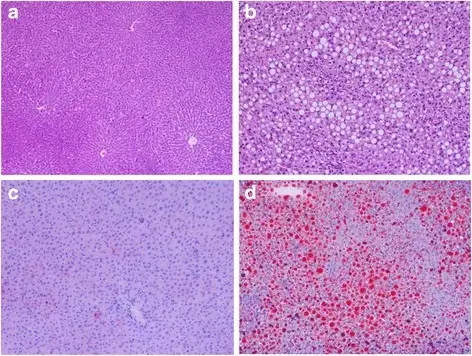Nonalcoholic fatty liver disease is the liver conditions affecting people who drink little to no alcohol that results in fat abnormal deposition in the liver.
What is the Pathology of Nonalcoholic Fatty Liver Disease?
The pathology of nonalcoholic fatty liver disease is:
-Etiology: The cause of the nonalcoholic fatty liver disease is unknown
-Genes involved: None.
-Pathogenesis: The sequence of events that lead to nonalcoholic fatty liver disease includes insulin resistance as the key mechanism leading to hepatic steatosis, and perhaps also to steatohepatitis.
-Histology: The histology associated with nonalcoholic fatty liver disease shows macrovesicular steatosis, but may be composed of a mixture of large and small vacuoles
How does Nonalcoholic Fatty Liver Disease Present?
Patients with the nonalcoholic fatty liver disease typically affects male present at the age range of 40-49 years. The symptoms, features, and clinical findings associated with nonalcoholic fatty liver disease include fatigue, pain or discomfort in the upper right abdomen, jaundice, ascites, enlarged spleen, and red palms.
How is Nonalcoholic Fatty Liver Disease Diagnosed?
Nonalcoholic fatty liver disease is diagnosed using CT, MRI, and biopsy.
How is Nonalcoholic Fatty Liver Disease Treated?
Nonalcoholic fatty liver disease is treated by lifestyle management.
What is the Prognosis of Nonalcoholic Fatty Liver Disease?
The prognosis of nonalcoholic fatty liver disease is good.



